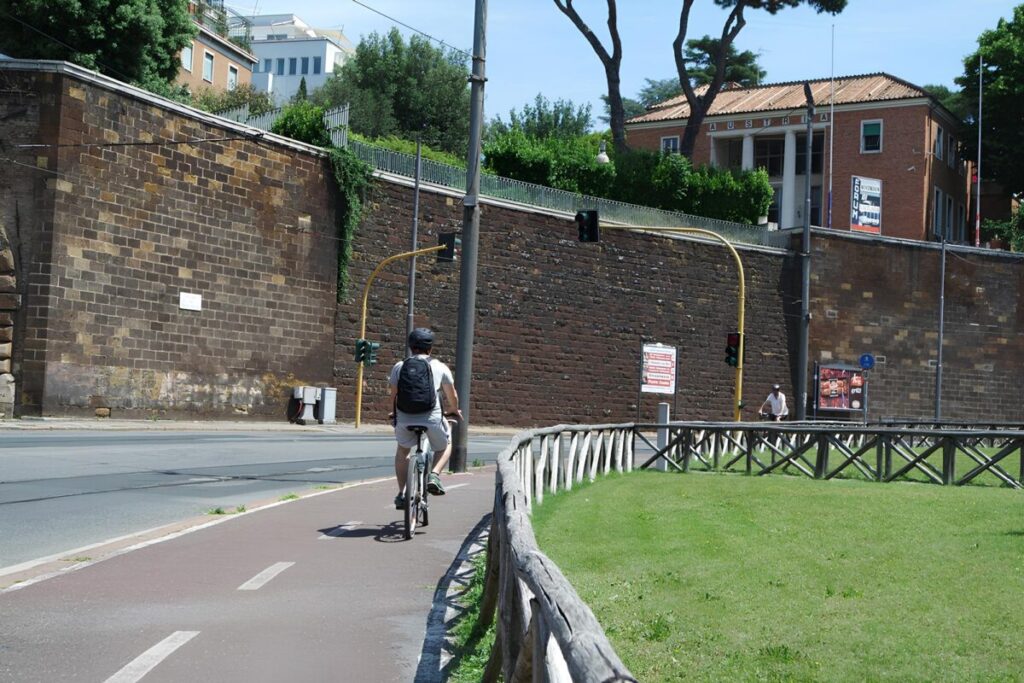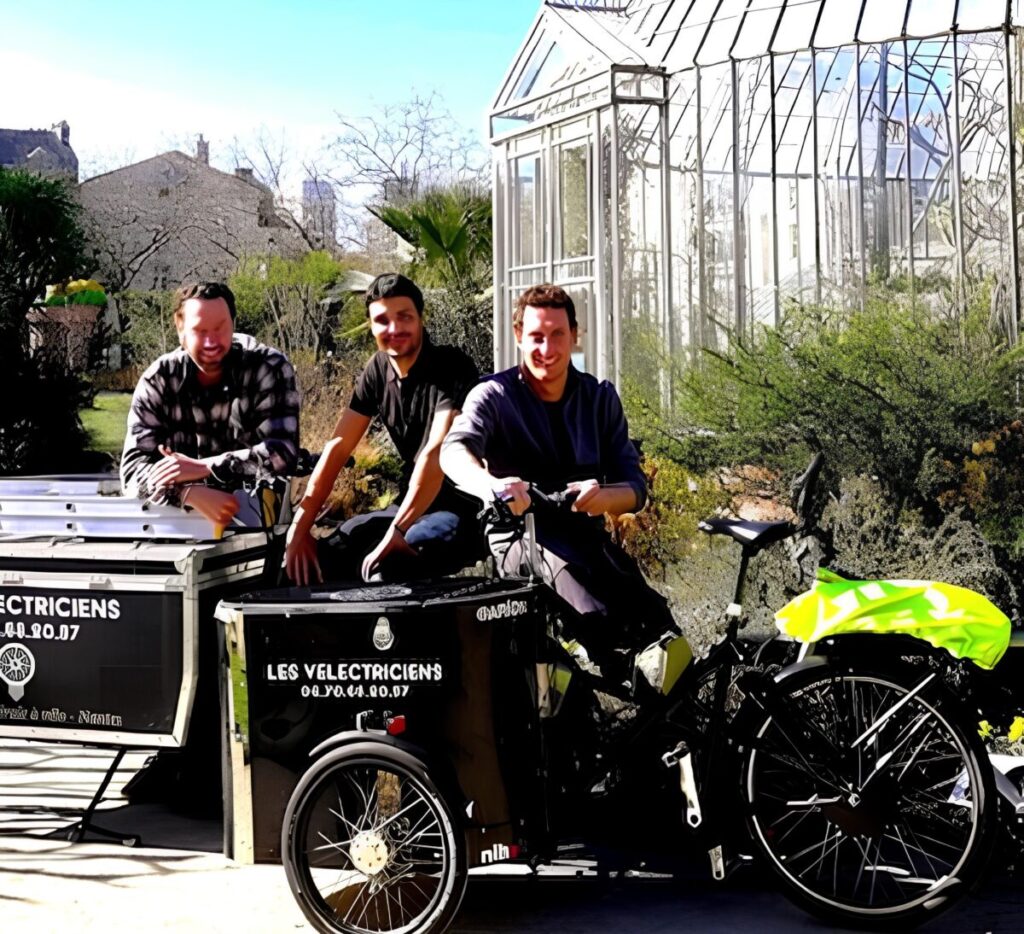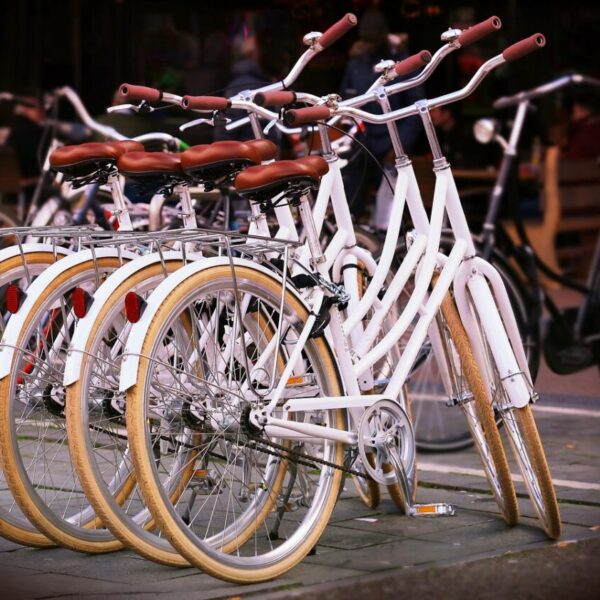Faced with the gradual suffocation of urban centers by automobile traffic, some territories are betting on an alternative that seemed relegated to leisure or sports effort: the bicycle. Driven by engaged citizens, structured associations, or proactive municipalities, several cities are today building a new idea of daily commuting. Slow, inclusive, collective, this two-wheeled revolution sketches a new model of a city, more human.
This article, on soft mobility, is a summary of 4 articles published in 22-med, available in the 11 languages used on the site.
Annaba wants to make cycling a way of life: by Tarik Hafid - Algeria
Bicycles reconnect the neighborhoods of Rome: Jessica Perra - Italy
In Nantes, professionals are taking to cycling: Paola Da Silva - France
The residents of Shkodër are pedaling towards a greener future: Rajmonda Basha - Albania
All over, the bicycle is reshaping urban territories. It is no longer just a sports tool or a Sunday leisure activity. It is becoming a driver of social, economic, and environmental transformation. In Annaba, it brings generations together. In Rome, it connects the margins. In Nantes, it reinvents work. In Shkodër, it heals the city. A brief tour of a Europe that is discovering or rediscovering the virtues of the “little queen”*.
In Annaba, in northeastern Algeria, pollution and automobile congestion are no longer fatalistic. In 2022, a small group of enthusiasts founded Annaba Bike City, an association that advocates for making cycling a pillar of urban mobility. The project seems simple: to restore the bicycle's nobility in a city with high cycling potential. But behind the obviousness, a quiet revolution is underway, as in many other cities. Far from imposed models, the connection between public space, health, and mobility is being reinvented.
A cycling city... in the making
Annaba, an industrial and coastal city, has undeniable assets for transformation: flat terrain, modest distances, natural riches. According to Bilal Guerfi, president of the association, “the city could become a reference like Copenhagen or Strasbourg.” With an ambitious plan of 492 km of bike paths, linking lakes and beaches, the association targets both residents and tourists. And the idea is progressing: on two major boulevards, the first bike paths are being realized, funded by the municipality and designed with specialized consulting firms.
Far from being a sports club, Annaba Bike City wants to make cycling a lifestyle. The association welcomed over 70 members in its first year, 70% of whom are over 35 years old. And women are not left behind: they are the majority in activities, symbolizing the normalization of a space that has long been male-dominated. Weekend outings have become anticipated events, visible, almost political in a city where, just a few years ago, a woman on a bicycle was an exception.
In Rome, a ring for all

While Annaba starts from scratch, Rome is repairing a fragmented city. The Grand Raccordo Anulare delle Bici (GRAB) is a 50 km cycling ring currently under construction. It will connect the suburbs to the historic center, while crossing iconic places like the Via Appia Antica or the Colosseum. By 2026, the Italian capital hopes to create a new structuring axis for soft urban mobility, capable of alleviating traffic flows while enhancing heritage.
But Rome is not only relying on large infrastructures. In neighborhoods, small “urban recycling” projects like that of Monte Ciocci are transforming old railway tracks into bike paths. These hybrid developments breathe new life into underutilized spaces. “These are essential urban links for schoolchildren, families, and residents,” emphasizes Eugenio Patanè, the elected official in charge of mobility. A dual strategy that aims to reconnect peripheral areas while addressing local, immediate, and concrete needs.
And the effects are beginning to be felt: according to the Urban Ecosystems report, Rome has gained 24 places in the ranking of sustainable metropolises. This is little in light of the challenges, but it marks a new dynamic, supported by a growing use of micromobility. Nearly 70% of Italians now own a bicycle or an electric scooter. In Rome, over 500,000 car trips were avoided in 2024.
Nantes, the capital of pro cycling
In Nantes, the revolution is economic. Since 2013, the association Les Boîtes à Vélo has brought together artisans, delivery people, restaurateurs... all of whom have switched to cycling mobility. Their motto: working by bike is not only possible but often more efficient. Romain Allais, a former plumber turned cyclist, recounts: “It’s much smoother, especially in the city center. And the brand image benefits from it.”

Beyond the network, the association offers training, support, and assistance for creation. The program Ma Cycloentreprise, launched in 2019, has allowed dozens of independents to test their professional project by bike. The movement is gaining momentum: thirteen branches are now active in France, although some regions remain hesitant. But for members, the collective dynamic helps overcome technical or logistical obstacles. Monthly gatherings, shared advice, practical workshops... everything is good to normalize another way of working, which is no longer anecdotal.
The professions involved are diverse, sometimes unexpected: DJs, luthiers, bicycle repairers... All testify to the adaptability of this form of mobility. And behind the practical aspect, there is also a desire to advocate, to embody another professional model, more autonomous, more agile, more resilient.
Shkodër, historical capital of cycling
In Albania, the city of Shkodër did not wait for the eco trend to adopt the bicycle. Nearly 30% of residents already travel by bike, an exceptional statistic at the European level. In this medium-sized city, the cycling culture is old. Orges Permargjeta remembers fans traveling across the country by bike to follow their team. “Shkodër is not big enough for cars. The bicycle makes sense here,” he summarizes.
The municipality is leveraging this tradition to improve quality of life and enhance its tourist appeal. Bike paths are being developed, and rental services are flourishing. The impact is real: air pollution is decreasing, the city center is revitalizing, and the city is becoming a green reference in Albania. For a country where cars remain king, Shkodër's example shows that another path is possible.
The municipality organized an international conference on sustainable mobility as early as 2012, foreshadowing current ambitions. Since then, investments have continued, and the bicycle is establishing itself as a concrete instrument of ecological transition. The city has only one square meter of green space per inhabitant, but compensates by offering gentle accessibility across its territory.
A new narrative of the city
But for these local revolutions to become sustainable, strong political commitment, suitable infrastructures, and renewed imaginations are still needed. These cities have not simply built bike paths. They have changed the way we think about the city. And that is anything but trivial.
Thus, all show, each in their own way, that the transition does not always go through spectacular breaks. Sometimes, it plays out in a pedal stroke.
*This expression dates back to the 19th century and originates from the history of the Netherlands during the reign of Wilhelmina. In 1890, succeeding William III, the queen, barely 10 years old, was at the head of the Dutch state. A few years later, the visiting French press highlighted the queen's amusing habit of cycling around the kingdom. Thus, the expression “the little queen on a bicycle” was picked up by many French newspapers, and the expression “the little queen” was adopted by the entire population to refer to the bicycle.

Cover photo: All over, the bicycle is reshaping territories. It is no longer just a sports tool or a Sunday leisure activity © 22-med
Indexing: Library of Mediterranean Knowledge
Bicycle cities, cities of the future
